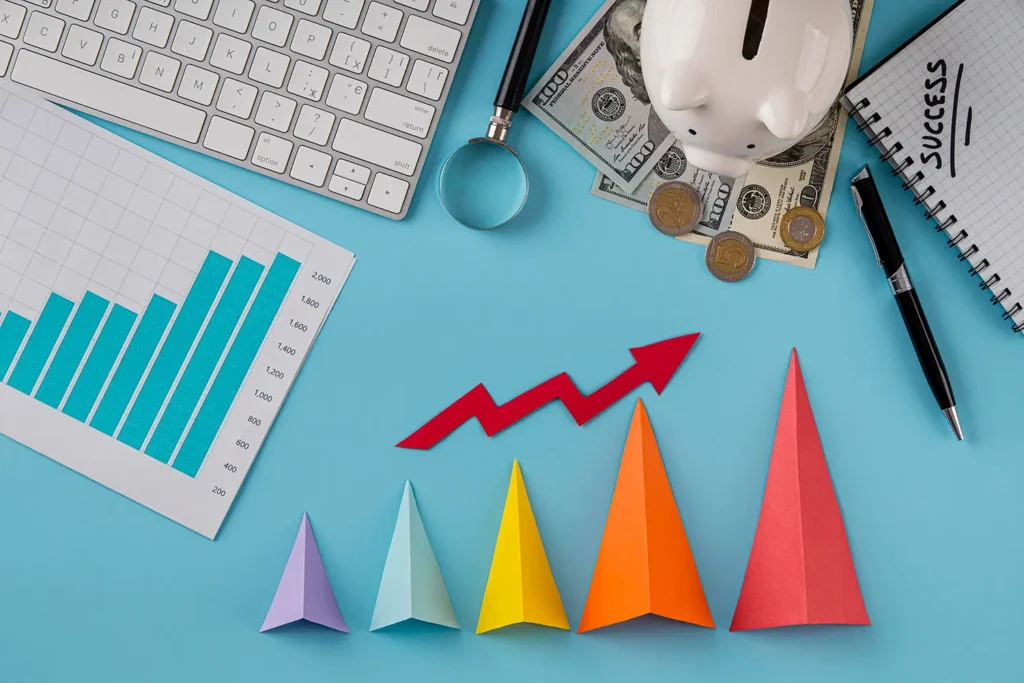Introduction
In the world of personal financial goals, two terms often come up side by side: saving and investing. While many use them interchangeably, they are fundamentally different strategies with distinct goals, risks, and rewards.
Understanding the difference between saving vs investing is key to building a strong financial future. Whether you’re planning for an emergency fund, a new house, or retirement, choosing the right approach can determine how quickly you reach your goal.
Let’s break it all down.
When it comes to building a strong financial future, many people wonder whether saving or investing is the better choice. Saving provides safety and easy access to your money, making it ideal for short-term needs and emergencies. Investing, on the other hand, offers the potential for higher returns but comes with more risk, making it suitable for long-term goals like retirement or wealth building.
Understanding the difference between the two helps you create the right balance and choose the best strategy for your financial goals.
What is Saving?
Saving refers to setting aside money in a safe and liquid place, usually for short-term goals or emergencies. Common saving tools include:
Savings accounts
Fixed deposits (FDs)
Recurring deposits
Money market accounts
Pros of Saving:
Low risk: Your money is safe, especially if deposited in insured banks.
Easy access: Great for emergencies or short-term needs.
Predictable returns: You know exactly how much interest you’ll earn.
The biggest advantage of saving vs investing is safety and stability. Money kept in a savings account is secure, easily accessible, and protected from major risks, making it ideal for emergencies or short-term goals. Saving vs investing also helps build good financial discipline, allowing you to set aside funds regularly and avoid unnecessary debt. Unlike investments, savings vs investing are not affected by market ups and downs, which gives you peace of mind and confidence that your money will be there when you need it.

Cons of Saving:
While saving vs investing is safe, it also has some drawbacks. The biggest disadvantage is that savings usually earn very low interest, which often cannot keep up with inflation. This means your money may lose value over time, reducing its purchasing power. Relying only on saving can also slow down your ability to build wealth and achieve long-term goals. Without investing, your money grows very slowly, making it less effective for reaching big financial milestones like retirement or business expansion.
Low returns: Interest rates are often lower than inflation.
May lose value over time: Inflation can erode purchasing power.
Best for: Emergency funds, short-term goals (under 3 years), and peace of mind.
What is Investing?
Investing is the act of putting your money into assets like stocks, mutual funds, real estate, or gold with the goal of growing your wealth over time.
Unlike saving vs investing, which focuses on safety and easy access, investing aims to grow your wealth by taking calculated risks. The value of investments can rise or fall, but with smart choices and patience,saving vs investing can generate higher returns and help you reach long-term financial goals such as retirement, education, or building wealth.
Pros of Investing:
Higher returns: Can outpace inflation and grow your money substantially.
Wealth building: Ideal for long-term goals like retirement or buying property.
Power of compounding: The longer you invest, the more your money grows.

Cons of Investing:
Risk of loss: Markets fluctuate, and you could lose some (or all) of your investment.
Requires patience: You may not see immediate gains.
Not easily accessible: Unlike savings, it can take time to cash out investments.
Best for: Long-term goals, retirement, financial independence.5
Saving vs Investing: Key Differences
Feature Saving Investing
Purpose Short-term goals, emergencies Long-term goals, wealth accumulation
Risk Level Very low Medium to high
Returns Low (2-4%) High (7-15% or more)
Liquidity High – easy to withdraw Varies – some investments are illiquid
Time Horizon Short (0-3 years) Long (3+ years)
Inflation Protection Poor Strong
When to Save and When to Invest?
Knowing when to save and when to invest is key to building a balanced financial plan. Saving vs investing is best for short-term needs, such as creating an emergency fund, planning a vacation, or covering upcoming expenses, because it keeps your money safe and easily accessible.Saving vs Investing, on the other hand, is better for long-term goals like retirement, buying a home, or growing wealth, since it offers higher returns but carries more risk. By understanding your goals, time frame, and risk tolerance, you can decide whether saving or investing is the smarter choice.
Here’s how you can decide:
1. You Should Save If:
You’re building an emergency fund
You’re planning a trip, wedding, or buying a gadget in the next 6–12 months
You need quick access to cash
You can’t afford to lose money
2. You Should Invest If:
You’re saving for retirement (10+ years away)
You want to grow your wealth
You don’t need the money for a few years
You can handle market ups and downs
Real-Life Example
Let’s say you receive a $10,000 bonus. What should you do?
Save: Put $2,000 in a savings account for emergencies (rent, repairs, medical).
Invest: Put $8,000 into a diversified mutual fund for long-term growth.
This way, you’re protected in the short term while letting the rest of your money grow.
Tips for Balancing Saving vs Investing
Build an Emergency Fund First`
Save 3–6 months’ worth of expenses before you start investing.
Set Clear Goals
Know what you’re saving or investing for. This helps guide your strategy.
Understand Your Risk Tolerance
Some people are comfortable with ups and downs. Others need more stability.
Diversify
Even within investments, don’t put all your money in one place. Spread it across stocks, bonds, etc.
Automate Both
Set up automatic transfers to savings accounts and investments. You’ll stay consistent without thinking about it.
Review Regularly
Check your progress every 3–6 months. Adjust your strategy as needed.
Mistakes to Avoid
Putting all your money in savings and missing out on growth
Investing money you might need next month
Not saving for emergencies before investing
ignoring inflation’s impact on your money
Thinking investing is only for the rich—anyone can start with as little as $10
Conclusion
When it comes to saving vs investing, it’s not about choosing one over the other. It’s about balance.
Saving gives you security. Investing gives you opportunity.
Start by saving enough to protect yourself from financial shocks. Once you’ve got that safety net, move on to investing for the future. When done right, both can work hand-in-hand to give you a solid financial foundation and a life of freedom and choice.
Read More about personal finance.



